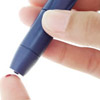Chemicals in personal care products linked to diabetes
A study lead by researchers from Brigham and Women’s Hospital (BWH) shows an association between increased concentrations of phthalates in the body and an increased risk of diabetes in women. Phthalates are endocrine disrupting chemicals that are commonly found in personal care products such as moisturisers, nail polishes, soaps, hair sprays and perfumes. They are also used in adhesives, electronics, toys and a variety of other products. This finding is published in the online edition of Environmental Health Perspectives.
Researchers, lead by Tamarra James-Todd, PhD, a researcher in the Division of Women’s Health at BWH, analysed urinary concentrations of phthalates in 2,350 women who participated in the National Health and Nutrition Examination Survey. They found that women with higher levels of phthalates in their urine were more likely to have diabetes. Specifically:
- Women who had the highest levels of the chemicals mono-benzyl phthalate and mono-isobutyl phthalate had almost twice the risk of diabetes compared to women with the lowest levels of those chemicals.
- Women with higher than median levels of the chemical mono-(3-carboxypropyl) phthalate had approximately a 60 percent increased risk of diabetes.
- Women with moderately high levels of the chemicals mono-n-butyl phthalate and di-2-ethylhexyl phthalate had approximately a 70 percent increased risk of diabetes.
The study population consisted of a representative sample of American women and was controlled for socio-demographic, dietary and behavioural factors. However, the women self-reported their diabetes and researchers caution against reading too much into the study due to the possibility of reverse causation.
“This is an important first step in exploring the connection between phthalates and diabetes,” said Dr. James-Todd. “We know that in addition to being present in personal care products, phthalates also exist in certain types of medical devices and medication that is used to treat diabetes and this could also explain the higher level of phthalates in diabetic women. So overall, more research is needed.”
(Source: EurekAlert: Environmental Health Perspectives)
More Information
 | For more information on diabetes, including different types of diabetes, blood glucose and dietary control, and long-term complications, as well as some useful videos, see Diabetes. |
Dates
Tags
Created by:

 Login
Login














